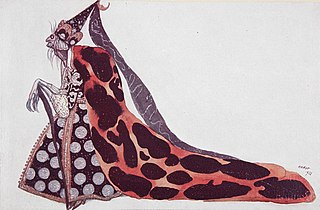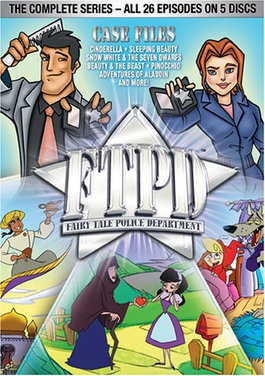
Hades, in the ancient Greek religion and mythology, is the god of the dead and the king of the underworld, with which his name became synonymous. Hades was the eldest son of Cronus and Rhea, although this also made him the last son to be regurgitated by his father. He and his brothers, Zeus and Poseidon, defeated their father's generation of gods, the Titans, and claimed joint rulership over the cosmos. Hades received the underworld, Zeus the sky, and Poseidon the sea, with the solid earth available to all three concurrently. In artistic depictions, Hades is typically portrayed holding a bident and wearing his helm with Cerberus, the three-headed guard-dog of the underworld, standing at his side.

In ancient Greek mythology and religion, Persephone, also called Kore or Cora, is the daughter of Zeus and Demeter. She became the queen of the underworld after her abduction by her uncle Hades, the king of the underworld, who would later also take her into marriage.

In ancient Greek religion and Greek mythology, Minthe is an Underworld Naiad nymph associated with the river Cocytus. She was beloved by Hades, the King of the Underworld, and became his mistress, but she was transformed into a mint plant by either his wife Persephone or her mother Demeter. The plant was also called by some as hedyosmos, which means "sweet-smelling".

"Sleeping Beauty", also titled in English as The Sleeping Beauty in the Woods, is a fairy tale about a princess cursed by an evil fairy to sleep for a hundred years before being awakened by a handsome prince. A good fairy, knowing the princess would be frightened if alone when she wakes, uses her wand to put every living person and animal in the palace and forest asleep, to awaken when the princess does.

"Beauty and the Beast" is a fairy tale written by French novelist Gabrielle-Suzanne Barbot de Villeneuve and published in 1740 in La Jeune Américaine et les contes marins. Her lengthy version was abridged, rewritten, and published by French novelist Jeanne-Marie Leprince de Beaumont in 1756 in Magasin des enfants to produce the version most commonly retold. Later, Andrew Lang retold the story in Blue Fairy Book, a part of the Fairy Book series, in 1889. The fairy tale was influenced by Ancient Greek stories such as "Cupid and Psyche" from The Golden Ass, written by Lucius Apuleius Madaurensis in the second century AD, and "The Pig King", an Italian fairytale published by Giovanni Francesco Straparola in The Facetious Nights of Straparola around 1550.

Maleficent is a fictional character who first appears in Walt Disney Productions' animated film, Sleeping Beauty (1959). Maleficent is the self-proclaimed "Mistress of All Evil" based on the evil fairy godmother character in Charles Perrault's fairy tale Sleeping Beauty, as well as the villainess who appears in the Brothers Grimm's retelling of the story, Little Briar Rose. Maleficent was originally animated by Marc Davis.

In fairy tales, a fairy godmother is a fairy with magical powers who acts as a mentor or parent to someone, in the role that an actual godparent was expected to play in many societies. In Perrault's Cinderella, he concludes the tale with the moral that no personal advantages will suffice without proper connections.

"The Blue Bird" is a French literary fairy tale by Madame d'Aulnoy, published in 1697. An English translation was included in The Green Fairy Book, 1892, collected by Andrew Lang.
Persephone, the daughter of Zeus and Demeter in Greek mythology, appears in films, works of literature, and in popular culture, both as a goddess character and through the symbolic use of her name. She becomes the queen of the underworld through her abduction by Hades, the god of the underworld. The myth of her abduction represents her dual function as the as chthonic (underworld) and vegetation goddess: a personification of vegetation, which shoots forth in Spring and withdraws into the earth after harvest. Proserpina is the Roman equivalent.

The Wicked fairy is the antagonist of Sleeping Beauty. In some adaptations, she is known as Carabosse. The most notable adaptation of the character is Maleficent, a Disney villain who appeared in various Disney media, beginning with the 1959 Walt Disney film Sleeping Beauty.
This is a list of books by Mercedes Lackey, arranged by collection.

Cinderella is a 1977 American erotic musical comedy film directed by Michael Pataki and starring Cheryl "Rainbeaux" Smith, Brett Smiley, and Sy Richardson.

The Land of Stories is a series of children's fiction, adventure and fantasy books written by American author, actor and singer Chris Colfer. The first book, The Wishing Spell, was released on July 17, 2012. The sixth book was published in July 2017. Colfer revealed plans for a prequel series in 2016, and has since published three books in this prequel series beginning with A Tale of Magic... in 2019.

Fairy Tale Police Department is an Australian-German animated series, produced by the company Yoram Gross-EM.TV in co-production with EM.TV & Merchandising AG, Victory Media Group, and Talit Communications. It aired on Seven Network at various times. It offers a new perspective on classic fairy tales through the central characters Johnny Legend and Christine Anderson. They are magic police officers who restore balance to society.
Cinderella is a Disney franchise that commenced in 1950 with the theatrical release of the 1950 film Cinderella. The series' protagonist is Cinderella, who was based on the character of the same name from the Cinderella fairy tale.

Flora, Fauna, and Merryweather are the three good fairies in Walt Disney's 1959 film Sleeping Beauty. They are characterized as Princess Aurora's fairy godmothers and guardians, who appear at baby Aurora's christening to present their gifts to her. The three were voiced by Verna Felton, Barbara Jo Allen, and Barbara Luddy, respectively.

Lore Olympus is a romance webcomic created by New Zealand artist Rachel Smythe. The comic is a modern retelling of the relationship between the Greek goddess and god Persephone and Hades. It began publishing weekly on the platform Webtoon in March 2018. Lore Olympus is currently the most popular comic on Webtoon; as of January 2024, it has 1.3 billion views and 6.5 million subscribers. The comic has won a Harvey Award, two Eisner Awards, and received nominations for Ringo Awards. It was announced in 2019 that a television adaptation was under development.
Princess Aubergine is an Indian folktale collected by Flora Annie Steel and sourced from the Punjab region. It concerns a princess whose lifeforce is tied to a necklace, and, as soon as it falls in the hand of a rival, the princess falls into a death-like sleep - comparable to heroines of European fairy tales Snow White and Sleeping Beauty. Variants exist in India, both with a heroine and a hero whose life is attached to a magical necklace.














